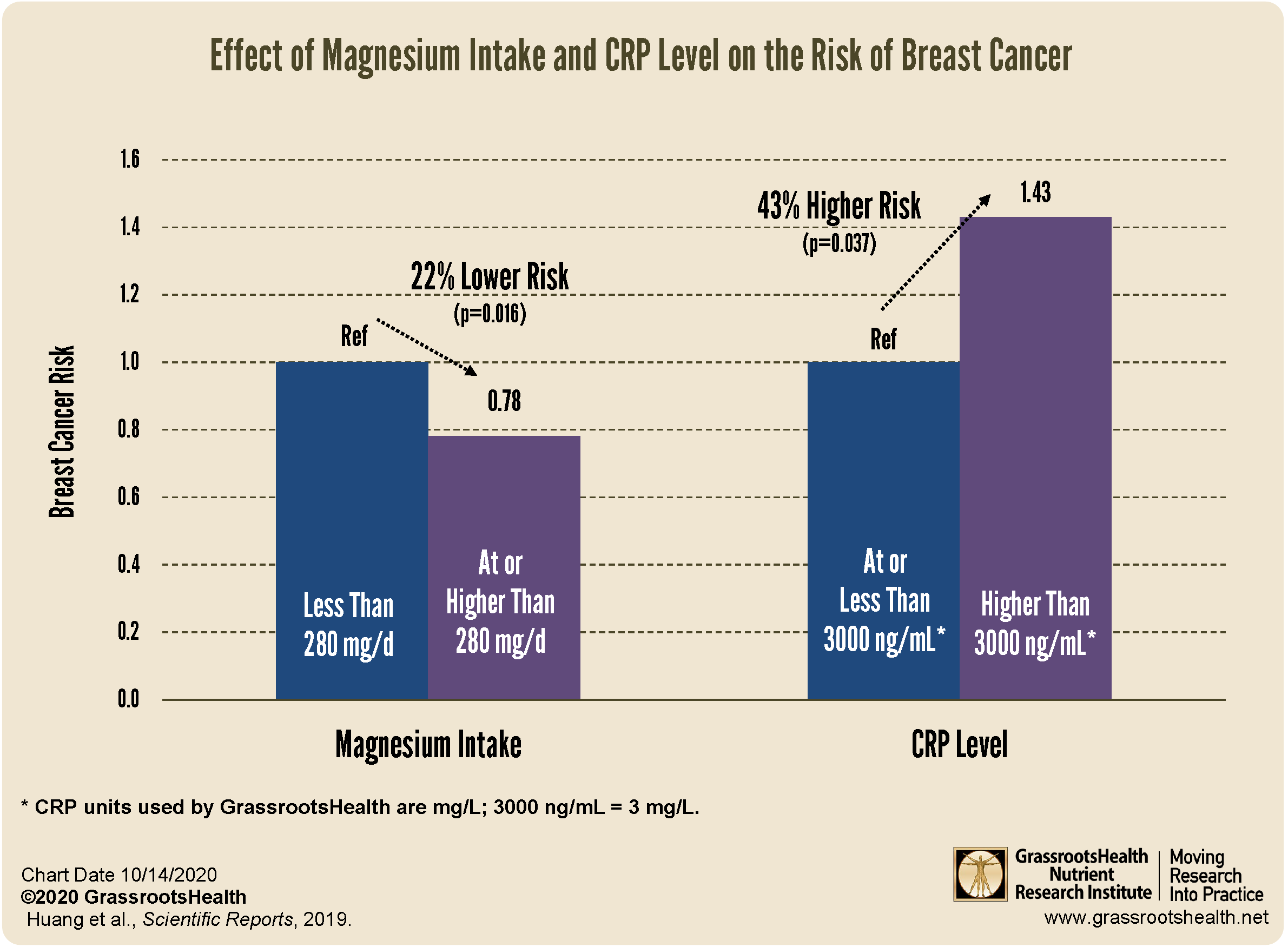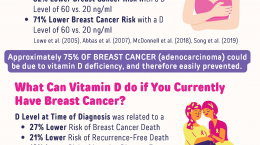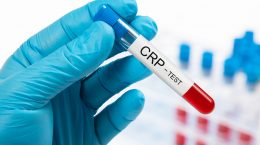Published on October 19, 2020
Study shows both direct and indirect effects of magnesium intake and risk of breast cancer
 This October, for Breast Cancer Prevention Month, GrassrootsHealth has shared information about the association of certain nutrients (such as vitamin D and vitamin C), their intake or status, and how they affect breast cancer risk and outcomes. Vitamin D specifically has many roles in the physiology of cancer prevention, as detailed in a recent post here. Many studies have covered the relationship between the risk of breast cancer and vitamin D – today however, we will review a case-control study by Huang et al. showing a significant association between magnesium and breast cancer risk, as well as inflammation.
This October, for Breast Cancer Prevention Month, GrassrootsHealth has shared information about the association of certain nutrients (such as vitamin D and vitamin C), their intake or status, and how they affect breast cancer risk and outcomes. Vitamin D specifically has many roles in the physiology of cancer prevention, as detailed in a recent post here. Many studies have covered the relationship between the risk of breast cancer and vitamin D – today however, we will review a case-control study by Huang et al. showing a significant association between magnesium and breast cancer risk, as well as inflammation.
Details About the Study
Huang et al. enrolled a total of 1050 patients with breast cancer and 1229 control subjects to determine if magnesium intake had a direct association with breast cancer incidence, or an indirect association by looking at inflammatory markers interleukin-6 (IL-6) and C-reactive protein (CRP). Magnesium intake was assessed using food frequency questionnaires.
Risk of Breast Cancer Decreased with Higher Magnesium Intake and Lower CRP Levels
The study found a significant inverse relationship between magnesium intake and breast cancer risk, showing a trend of higher intakes being associated with lower risk (p-trend<0.001). Overall, there was a 22% reduction in breast cancer risk associated with those whose magnesium intake was at least 280 mg/day compared to those whose magnesium intake was lower than 280 mg/day (OR=0.78).
There was also a significant increase in breast cancer risk when comparing participants with higher CRP levels – those with CRP levels of > 3000 ng/ml, indicating more chronic inflammation, had a 1.43 times higher breast cancer risk compared to those with levels of <= 3000 ng/ml, indicating less chronic inflammation. (Note that the CRP units used by GrassrootsHealth are mg/L, so these values would be equivalent to >3 mg/L and <=3 mg/L.)
The Link Between Inflammation and Cancer
According to Huang et al., chronic low-grade inflammation is linked to the development of approximately 20% of all cancers. CRP is a marker used to identify and track chronic inflammation, and has also been associated with the risk of certain cancers, such as colorectal cancer and lung cancer, and with the findings of the study above, breast cancer as well. It is hypothesized that magnesium may play a role in the inhibition of tumor growth due to its involvement in reducing inflammation and oxidative damage within the cells.
What is Your Level of Inflammation? Are You Getting Enough Magnesium and Other Nutrients?
Join the Breast Cancer Prevention Study to find out! Using the GrassrootsHealth Custom Kit Builder, you can create a test kit that measures the status of nutrients important to the regulation of inflammation (such as vitamin D, omega-3s, and magnesium), as well as your CRP level. Click here to build and order your test kit today – measure your status and take the steps necessary to improve them if needed; make an impact on your health today and for your future! When you know what your levels are, you can determine next steps to take and how much supplementation may be needed if you are not at your target levels.
What Does it Take YOU to Get Your D to 40 ng/ml (100 nmol/L)?
Did you know your health could be greatly affected by making sure you have a vitamin D level of at least 40 ng/ml (100 nmol/L)? Help us help you.
STEP 1 – Do you know what your vitamin D level is? If not, be sure to test today to find out.
STEP 2 – Determine your target level. Are you at your target level? Experts recommend a level of at least 40-60 ng/ml (100-150 nmol/L).
STEP 3 – Need to boost your level? Use the D*calculator to see how much vitamin D it may take to reach your target. Opt for the Loading Dose for a quicker boost.
STEP 4 – Optimize how your body absorbs and utilizes vitamin D with co-nutrients and these simple steps.
STEP 5 – Re-Test! This is an important step to make sure you have reached your target level, and to ensure you are not taking too much! Re-testing after 3-4 months is recommended.
STEP 6 – Adjust, Repeat…
How can I track my nutrient intake and levels over time?
To help you track your supplement use and nutrient levels, GrassrootsHealth has created the Personal Health Nutrient Decision System called
For each specific supplement, you can track what days you take it, how much, and many other details. This will help you know your true supplemental intake and what patterns of use work for you to reach and maintain optimum nutrient levels. Check it out today!









